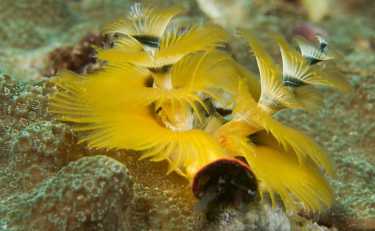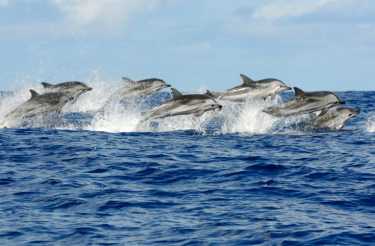Improving electronics by investigating dolphin sonar capabilities

如果我们在生物化学和生物体对环境的反应中的简单物理学中开始使用资源,那么我们可能会开始更好地相互联系。只有一百年左右的时间对我们的电本质学有深刻的了解,我们面对自然现象!
Here is an excellent example of a pure research that leads inevitably to human improvement. When radar shocked the forces trying to overcome each other in wars, it was a marvellous invention. Since that time, we need more and more sophistication in our environmental relations. Cameras advance by the day, but war still plagues us with sea and land mines, IEDs and covert electronic.
基本上,人们无缘无故地遭受痛苦,仅仅是因为我们无法迅速制定反措施。为了帮助,蝙蝠和海豚等动物已经developing sonarfar longer than we have. If their "equipment" doesn't adapt or work, they become extinct. That's a thought to keep in mind.
A dense "fog" confounds human sonar by scattering and stretching the beams when bubbles in the sea get in its way. The Atlantic bottlenose dolphin (Tursiops truncatus) is recorded making bubble-nets and is shown doing so below on Attenborough's "Blue Planet." When it echo-locates a target, Tursiops emits a short click sequence of high intensity sound. If they use a mathematical method of deciphering prey targets from a mass of bubbles, a detection algorithm could be BiaPSS.
这将鱼靶的气泡“混乱”分类,您认为海豚无法使用。T.G.Leighton,G.H。Chua和P.R. White在南安普敦大学的声音与振动研究所中努力使用BIAPS与Sonar一起使用BIAPS。今天的论文Proceedings of the Royal Society A: Mathematical and Physical Sciences检查了海豚如何能够从目标鱼中解释其声纳的回声,并受到自己的气泡的干扰。
The answer seemed to be the use of nonlinear mathematics, but dolphins aren't well-known for their applied maths..

这些图像被认为是“蓝色星球”。学分:©BBC
(a) Common dolphins herd sardines with bubble nets.
(b) A dolphin starts to release a cloud of bubbles from its blowhole. A moment later
(c) The dolphin swims on, leaving behind the expanding cloud. Other dolphins enter the frame.
(d) The sardines school within a wall of bubbles and are trapped.
Dolphins do change the amplitude of their clicks and the authors propose that if the two clicks are different, the animal would be able to detect the amplitude change in the echo and so discriminate simple clutter from a prey target. With a similar system to BiaPSS, they could also reduce false alarms.
A dolphin needs to be hunting successfully at all times and the false alarms regularly found on somehuman sonarwould be detrimental to survival in the mammal. The main problem lies with the dolphin's upper frequency limit. At 150kHz, the dolphin can't access frequencies of twice the pulse frequency. Unless they use 75 kHz or less, this nonlinear mathematical use is impossible for them. We shall see what intriguing solution the dolphins invented as research catches up with their systems!

学分:©南安普敦大学/皇家学会论文集
Above: Some of the team try and sort out the bubble-detection system of BiaPSS, as they leave harbour. Data acquisition was in the cabin of the RV Bill Conway. They used a Red Funnel Line vessel to create a wake of bubbles!
Leighton,Chua和White先生在违反对海豚实际做的事情的进一步研究的需求为我们提供了隧道尽头的声音。由于其宝贵研究的潜在应用,检测电子设备的未来突然显得更加明亮。
Related:
Follow:推特/Facebook/Google+/Pinterest/FreeEnergy Saving Software/MoreScience News
主题:Dolphins




